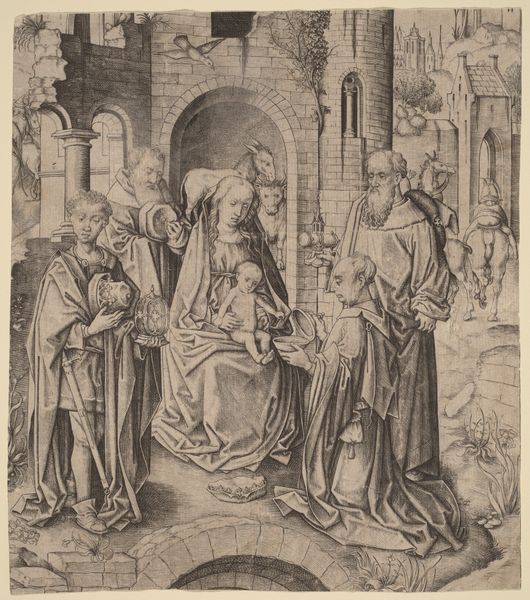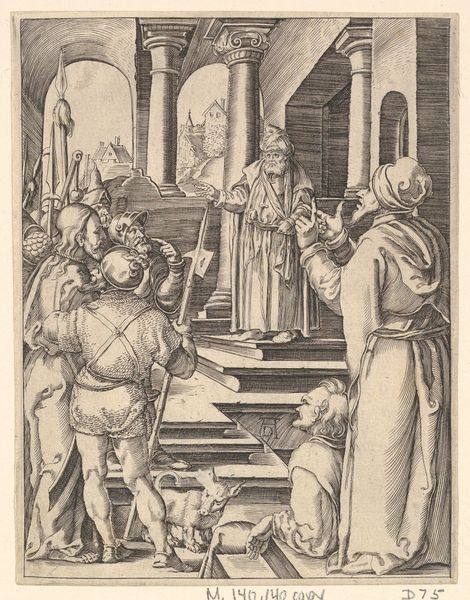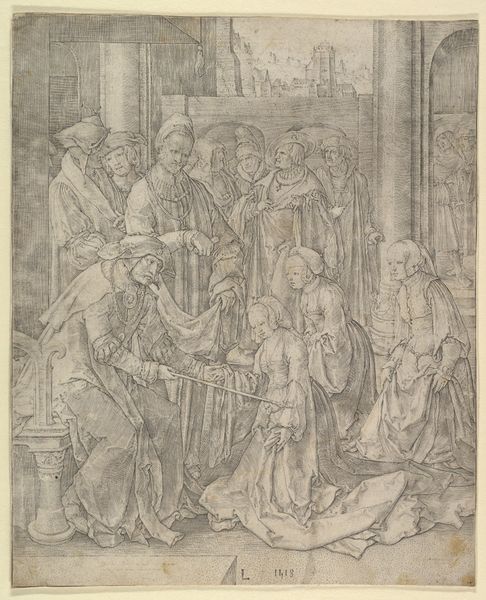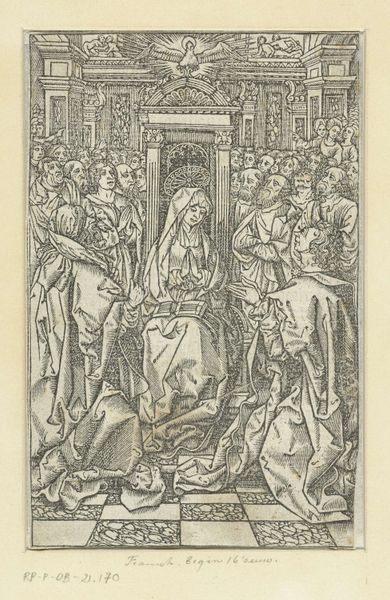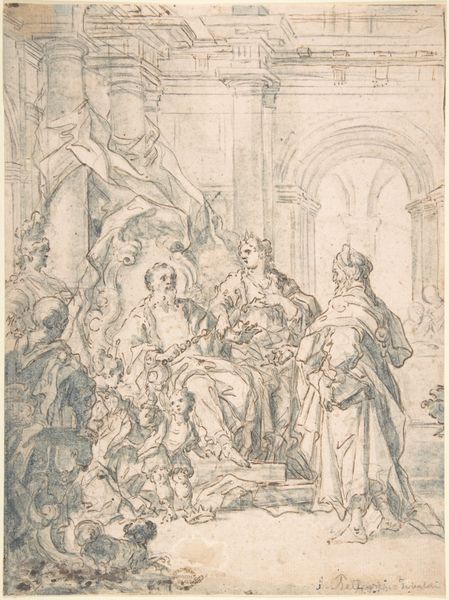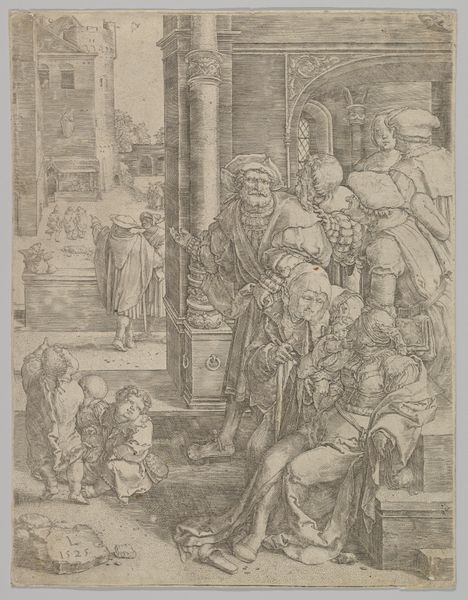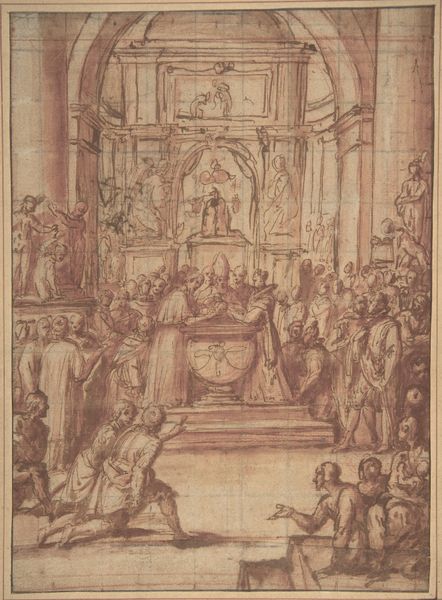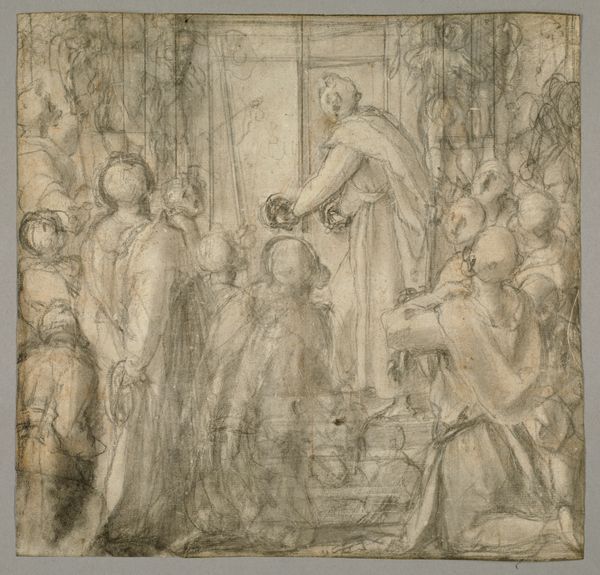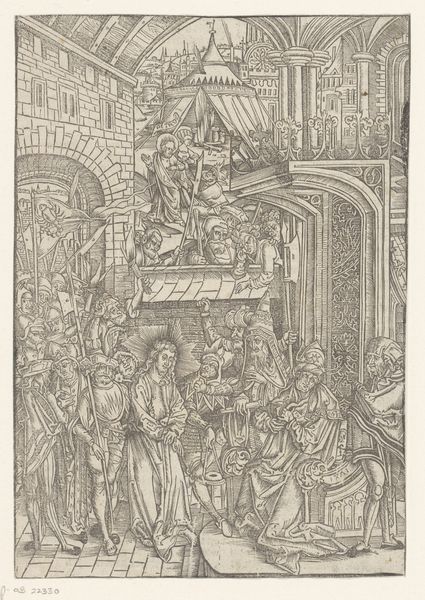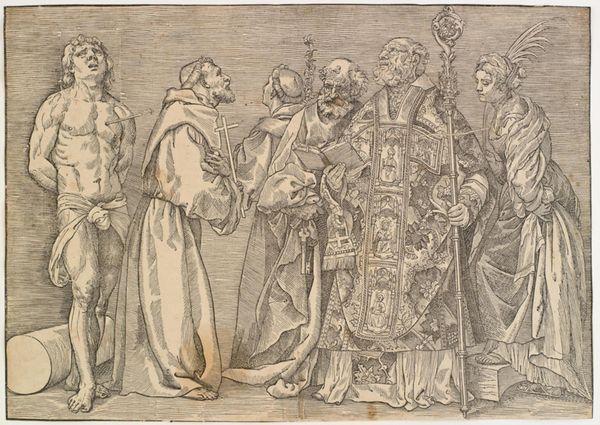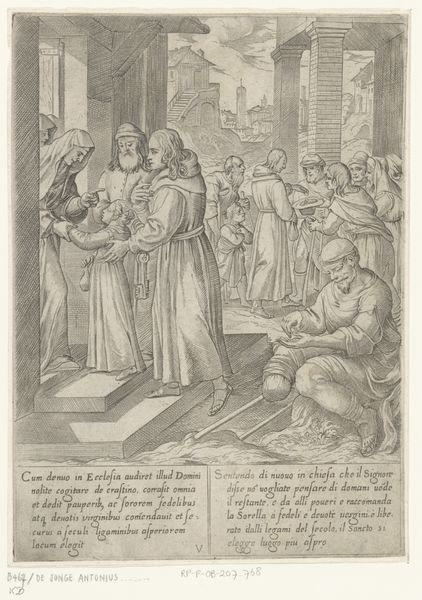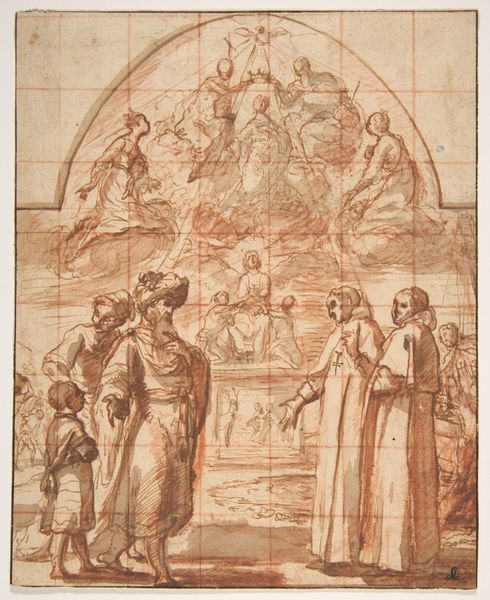
S. Giovanni Alberti Fiorentinos historie. Helgenen anklager på torvet biskopperne af Firenze for simoni(?) 1523 - 1605
0:00
0:00
drawing, ink
#
drawing
#
charcoal drawing
#
mannerism
#
figuration
#
11_renaissance
#
ink
#
history-painting
Dimensions: 205 mm (height) x 142 mm (width) (bladmaal)
Editor: This ink and charcoal drawing is by Jan van der Straet, created sometime between 1523 and 1605. The title is quite a mouthful: *S. Giovanni Alberti Fiorentinos historie. Helgenen anklager p\u00e5 torvet biskopperne af Firenze for simoni(?)*. The drawing feels very busy, with all these figures clustered together. The lines seem very expressive, but also a little chaotic. What is the key element of visual interest for you in this work? Curator: From a formalist perspective, what immediately strikes me is the use of line to create depth and movement. Notice how the artist employs varying line weights to distinguish between foreground and background figures. The darker, more defined lines in the foreground create a sense of immediacy, drawing the eye to the central figures and the accusation taking place. Then, observe how the artist uses hatching and cross-hatching techniques, building up tone and volume with great sophistication in such a monochromatic palette. Do you see how these structural decisions guide our reading of the image? Editor: Yes, I can see that. It’s almost like the figures in the background are fading away, giving a real sense of perspective, and making the foreground action really stand out. The strategic placements of hatching and line work is clear, and really compelling now that you've explained it. It does draw the eye toward the tension and conflict shown on display. I hadn't thought about it that way. Curator: Precisely. The density of line work isn't random, but deliberate. Each element works to create not just representation, but the emotional tenor of the scene. Look how the architecturals and colonnades also serve as horizontal lines, countering the motion in the group to further add emphasis to Alberti. Ultimately, the tension isn’t merely in the historical narrative but woven within the aesthetic framework. The overall visual organization guides our interpretation as much as any story the piece tries to tell. Editor: That's a different approach to what I expected, I had only focused on the characters initially! Thank you! Curator: It highlights how even within historical depictions, formal considerations such as line and composition fundamentally mediate our perception of the depicted subject.
Comments
No comments
Be the first to comment and join the conversation on the ultimate creative platform.

